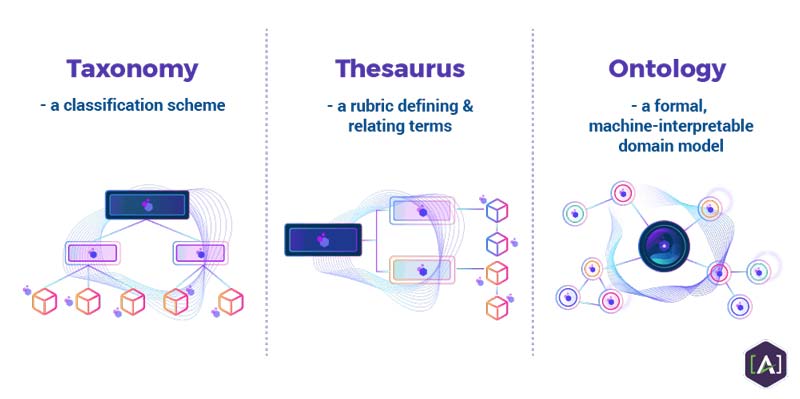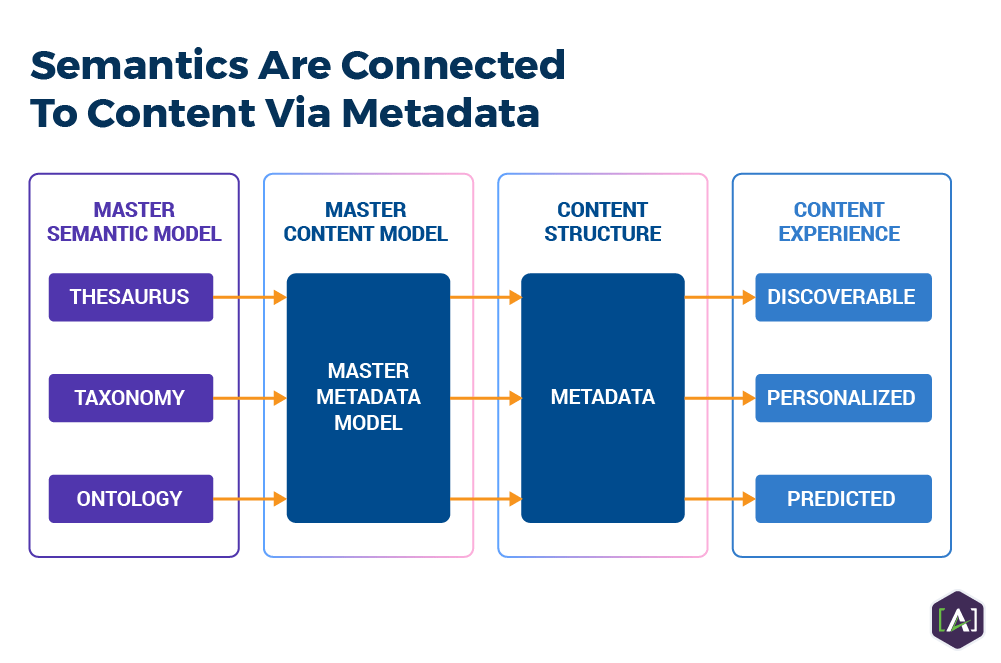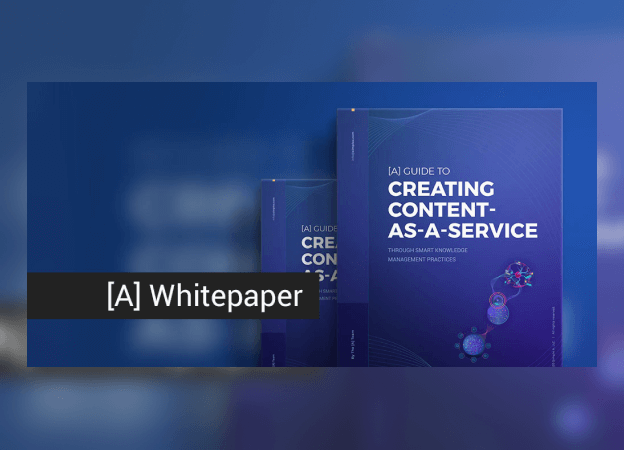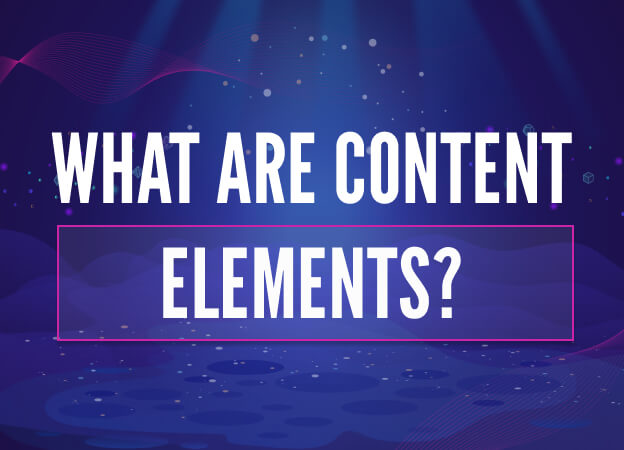Semantically-rich content is essential to the creation and operation of intelligent content.
In this article, we explore the importance of semantic content and why semantic services platforms and providers have become an essential ingredient in the successful deployment of intelligent content. For some context, let's first look at how semantic services fit within a content ecosystem and content architecture.
The content ecosystem refers to the complete technology environment in which the content lifecycle happens within an organization. The content ecosystem features the investments in content technology and content services made under content engineering, as well as the enterprise systems of record with which that technology and those services will interact. Given the fact that the content ecosystem encompasses all of the tools that will touch content during its lifecycle, the responsibility of implementing and sustaining this integrated environment will fall under content operations.
The content architecture documents the investments to be made in formalized content structure and content semantics that underlie intelligent content. As an activity, and as a deliverable, content architecture provides the mechanism whereby content engineering provides detailed design information to content strategy. Content architecture also provides the detailed guidance needed by content operations to implement and operationalize the content technology components designed and developed under content engineering. This is how content operations will establish the content ecosystem that combines the content technologies being introduced with the enterprise systems already in use, and that sustains the content lifecycle.
In many ways, the content architecture is the lynchpin activity and deliverable, as it ultimately connects the content strategy (the “what” and “why”), the content model and content processes developed by content engineering (the “how”), and the operational responsibilities for implementation and operation defined under content operations (the “when”, “where”, and “who”).
When exploring the content ecosystem and content architecture, semantics and metadata issues will continually arise. The complexity around both semantics and metadata preclude humans from managing these strategic issues manually. This leads us to discover semantic services platforms.
Why Semantic Services Platforms Matter
We cannot build nimble customer interactions based on larger conversations with customers across multiple touchpoints unless we have a way to connect the concepts in our content set in coherent and aligned ways. Semantic content does this by making content machine-readable, by identifying concepts in a way that machines can read, and then linking those concepts to expand its understanding.
To introduce semantically-rich content into an existing content ecosystem, tag sets must be introduced around the customer context and around the content itself. This is a highly essential, ongoing process. This has led to a new kind of solution within a content intelligence architecture. A semantic services platform can be used to maintain those tag sets across the different systems that contain our content.
What Does a Semantic Services Platform Do?
A semantic services platform provides a central system of record for a shared taxonomy; it is a unified classification system and a controlled vocabulary. This specialized technology can be used to control and simplify how content assets are tagged, in order to add contextual intelligence directly into the content sets themselves.
A semantic services platform enables new, key organizational capabilities, including:
-
Content targeting and personalization
-
Faceted, intelligent search experiences
-
A rich corpus of content to aid chatbots and other conversational UIs
-
Discovery of content assets for reuse and multipurpose value
-
Reduce internal friction in creating consistent content across divisions
From a user perspective, the semantic services platform usually allows for increased productivity in the following functional areas:
-
Web-based applications that allow taxonomy model managers to access and manage their models anytime from anywhere. Taxonomy managers and builders can easily collaborate with stakeholders and subject matter experts (SMEs) to create models that accurately reflect the organization, without the need for lengthy training.
-
Classification servers combine precise rulebases, natural language processing (NLP), and entity and fact extraction to give users precise and consistent classification results with the ease of automation, reducing the costs, time, and pain of manual content classification.
-
User search and information discovery experiences via a high-speed index that allows developers to query an ontology or taxonomy in real-time by providing user interface (UI) components, such as topic maps, faceted search, visualization, topic pages, related content, etc., and providing users sufficient navigational aids over their content.
A semantic services platform provides enterprise users with:
-
Shared taxonomy across businesses and products
-
Identification of relationships among content assets
-
Enriching content with precise, complete, and consistent metadata that defines what the asset is and what it is about (or “self-awareness”)
-
Harmonize disparate information sources throughout the organization against a common vocabulary
-
New abilities to extract facts and relationships for better analytics

Semantic standards are an evolving practice. Few enterprises have the experience, staff, or resources to resolve these challenges without assistance. That is why semantic services have grown so rapidly in recent years. [A] provides both consulting and ongoing functional enablement services to support enterprises to not only adopt semantic technology, but also build the internal procedures necessary to run value-producing semantics functions.
Content, Context, and Semantic Models
Content semantics refers to the association of content structures with specific semantic contexts given one or more semantic models that define and organize the concepts within relevant knowledge domains.
The breakdown of a product into releases, and the identification of the sub-components within each release, is an example of a semantic model that organizes information about a product line. Content structures, such as a step in a maintenance task, can be associated very specifically with a given release of a product through metadata that connects that content structure to a concept in the semantic model.
Semantic Models
There are different types of semantic models. At [A], we group semantic models under three types: taxonomies, thesauri, and ontologies.

-
Taxonomies: Our definition of taxonomies covers classification schemes that organize concepts for a shared understanding and coordinated use. These include type hierarchies and composition breakdowns, which feature predominantly when modeling content and when establishing the semantic contexts to which content can be associated.
-
Thesauri: With thesauri, we refer to a structured approach to defining and relating the actual words used to label concepts within semantic models to those used in the content itself. These would be loosely parallel to glossaries from style guides in earlier times.
-
Ontologies: With ontologies, we refer to more comprehensive and formal models that seek to make the representation of a domain of knowledge responsive to interpretation and use by automated systems to achieve designated goals. An ontology includes an expanded array of relationship types and introduces additional properties in entities. The goal is to enable the desired and planned automated behavior.
These semantic models ensure that clear definitions are provided for concepts and terms being used in our models and our content. Once the required semantic models are available, the terms that identify specific concepts within those models will be reused within the metadata structure. That metadata structure is defined as part of the content structure, to establish unambiguous relationships between content structures and the concepts within the semantic models with which they need to be associated.
Collectively, content semantics can be used to improve how an organization plans and acquires its content. It also improves how the organization manages and leverages content within discovery, rendition, and use of events that play such a central part in an optimized customer experience.
Although it is easy to forget this fact at times, content semantics play an important role in the content governance process that supports and oversees the content lifecycle. This helps designers, planners, authors, and curators find content that already exists and to complete their tasks more efficiently by reusing that content.
Metadata and Semantics
Content intelligence is highly dependent upon the structure, metadata, and semantics. [A] uses structured content and algorithms (among other tools) to generate more intelligent, personalized content interactions.
The creation and motion of structured intelligent content depend heavily on semantics. One of the first steps towards intelligent content is to locate and define appropriate semantics. We need to agree on terminology (what we call “things”) and how we tag them, even if only via a shared spreadsheet.
There are a surprising number of sources for, and consumers of, semantics within an organization. Here are a few:
- CMS
- CRM
- PIMs
- Learning
- SEO terms
- eCommerce
- Email management
- Controlled vocabularies
- Terminology management
- Campaign management
The Role of Metadata and the Core Semantic Model (CSM)
When preparing for semantic services, we should ask the following questions:
-
If we have applied our attention to the structure of content and have made an effort to create a picture of semantics that applies to it, what is a practical way to connect the two?
-
Is our model intuitive to the authors?
-
Does it make sense to stakeholders who manage the environment?
-
Will the metadata expose itself in a way that is useful to application environments?
To that end, we need a Core Semantic Model. We need a comprehensive model that defines concepts and their relationships, as well as the terminology for identifying them, across a domain and across systems, and that informs the Core Metadata Model that is incorporated into the Core Content Model®.
Semantics are connected to content via metadata. The following diagram illustrates how the Core Semantic Model works with the Core Metadata Model to achieve a content experience that is:
-
Discoverable
-
Personalized
-
Predictive

Metadata resources are:
-
Related to external systems, which ultimately control the source data
-
Intended to be useful to downstream processes
Metadata must be reusable across content sets, across systems, and across downstream processes. In short, metadata tells us what is going to happen to a thing and how it will behave, as well as where it will appear to the consumer.
Locating and utilizing semantics further extends the range of people, touchpoints, and the tools involved in this highly strategic region of the content technology landscape.
Semantics + Context + Content = Content Intelligence
These concepts are represented within the metadata content tags used in our systems of record. Critical content tags are usually associated with taxonomy or organized structure of content entities across organizations defined by topic, region, customer interest, or any other category that can be logically organized. This enables semantics to help drive the automatic, intelligent personalization of content.
Customer experience depends on the context plus content. It's the semantic system that ties this together.
How [A] Helps Customers Move Forward with Semantic Services
[A] provides many services related to this endeavor. A good example is the discovery and prototype/pilot program process in building a Core Semantic Model.
Developing a Core Semantic Model is typically a 4-step process that benefits from professional consulting and guidance:
-
INVENTORY: Collect any existing semantic models and support information
-
ANALYZE: Identify semantic requirements and evaluate existing models
-
DESIGN: To define cross-system semantic models, as well as relationships and context
-
DEMONSTRATE: Create a working prototype to illustrate how the semantics apply to cross-division content assets
The last step, in particular, is very important in securing upper management sponsorship to secure budget and set a directive to achieve consistent semantics and metadata across products and divisions throughout the enterprise.
Further Exploration
[A] provides a large repository of online resources that inform around content models and other tools essential to success with semantic services and other areas. These resources have been compiled based on extensive experience with dozens of clients who have gone through the selection process for semantic services providers:
About the Author
Maxwell Hoffmann has 25 years of experience in tech pubs and content strategy, and 15 years in localization. He has published numerous articles and blogs on structured authoring and localization/globalization issues. Hoffmann maps trends and solutions at [A] as Executive Producer, Content Technology Landscape.



